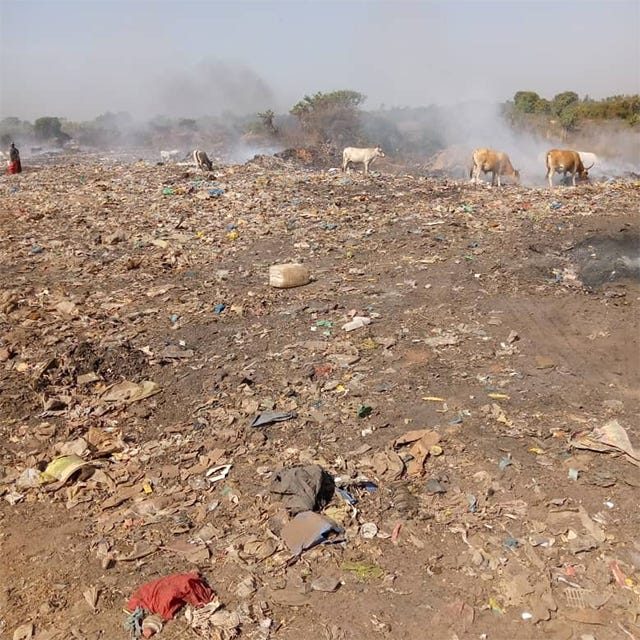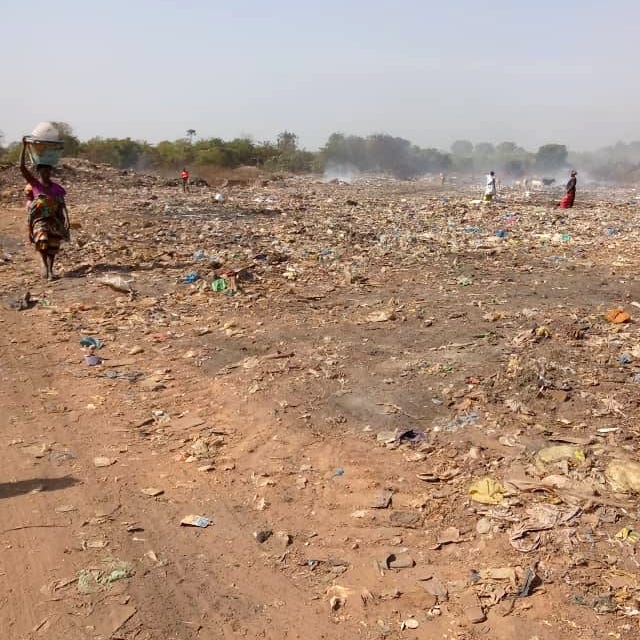Reduce, Reuse, Recycle
About two months ago I received a welcome message from Patrick: “I woke up in the morning and decided to go hunting. Guess what an exciting day it is after I miss doing it for years now.” Hunting was one of the first topics the two of us ever discussed, and I knew he loved hunting, so I was delighted to hear he was able to do it again. He went on, “I went with two other people deep in the forest and where waste is processed. It was sad to see unskilled workers trying to make a living in such an environment.” Then he sent a photo:
This is typical Patrick. He is literally the poorest person I’ve ever known, but he never fails to give a thought to others, and honestly it was a shock to discover that there are people even more destitute than he.
“This is where trucks of rubbish are emptied,” he explained, “and people search for better materials in it to recycle or sell. As you can see there is a herd of cattle grazing in it, which is harmful to them.”
“This is the most emotional of all,” he went on. “A very ambitious lady trying to make a living while her baby is on her back inhaling the bad odor.”
He told me that he had gone hunting with two natives of the area because “I don't know and understand the narrow ways in the bush. But we later separated so I passed by the dumping places for pictures.” This is some distance from his apartment—at least five kilometers—but he told me there are settlements right next to it. “Imagine living beside that place,” he said. Indeed, I’m still getting my head around his circumstances.
Many of Patrick’s stories have terrible endings—really the worst kind of endings; not people dying, though that happens too, but people just grinding on, absorbing the poverty and grief, and just wearing ever thinner. But we’ve talked about the people at the dump on and off since he sent the original photos and this story comes with a silver lining. One thing that’s impressive about Gambians is that they can make something out of virtually nothing. When he said they look for material to recycle, I’m not sure I gave a thought to what the material would be recycled into. The reality is pretty impressive, and underlines another Gambian strength: art.
I thought the wooden things were bowls like they have at Chinese restaurants for steamed dumplings, but he corrected me, “These are not bowls. They are used for filtration of solid and liquid stuff when cooking.”
He told me to ask Aunty Katherine what all the items are, I think because he believes I’m an incompetent in the kitchen, on the grounds that it’s unusual for Gambian men to ever set foot in one. He’s not entirely wrong, but I do know a colander when I see one.





